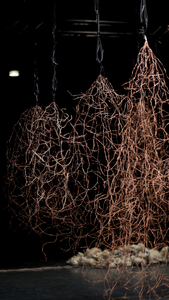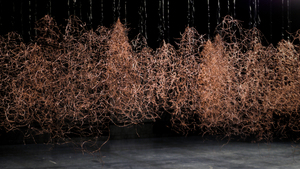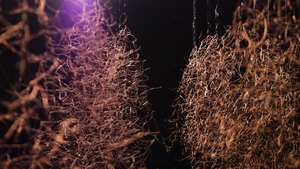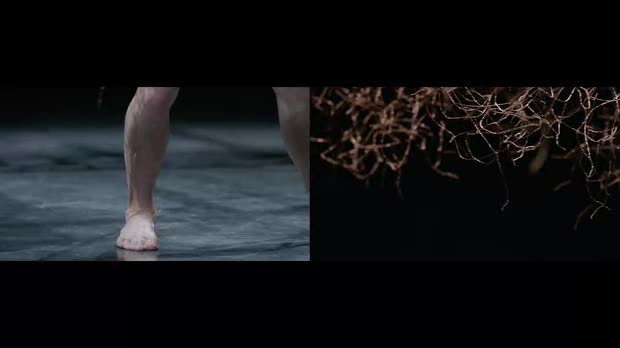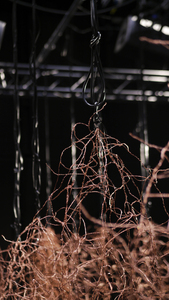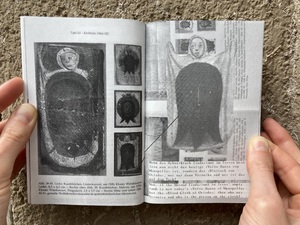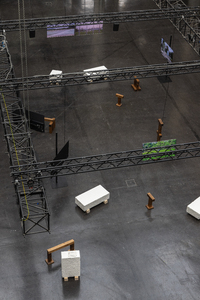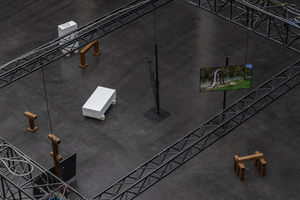"Social-Media-Kanäle der HfG"
| Begriff | Social-Media-Kanäle der HfG |
| Metakey | Freigabe Nutzung HfG (rights:usage_hfg) |
| Typ | Keyword |
| Vokabular | Rechte |
1412 Inhalte
- Seite 1 von 118
Ephemeral Antipodes
- Titel
- Ephemeral Antipodes
- Autor/in
- Datierung
- 02/03/2023
- Titel
- Ephemeral Antipodes
- Titel (en)
- Ephemeral Antipodes
- Urheberrechtshinweis
- © Lena Zwerina
- Rechtsschutz/Lizenz
- Freigabe Nutzung HfG
- Medienersteller/in
- Beziehung/Funktion
- Projektleiter/in
- Semester
- Studiengang
- Typ der Abschlussarbeit
- Importiert am
- 03.12.2024
- Übergeordnete Sets
- 1
Ephemeral Antipodes
- Titel
- Ephemeral Antipodes
- Autor/in
- Datierung
- 02/03/2023
- Titel
- Ephemeral Antipodes
- Titel (en)
- Ephemeral Antipodes
- Urheberrechtshinweis
- © Lena Zwerina
- Rechtsschutz/Lizenz
- Freigabe Nutzung HfG
- Medienersteller/in
- Beziehung/Funktion
- Projektleiter/in
- Semester
- Studiengang
- Typ der Abschlussarbeit
- Importiert am
- 03.12.2024
- Übergeordnete Sets
- 1
Ephemeral Antipodes
- Titel
- Ephemeral Antipodes
- Autor/in
- Datierung
- 02/03/2023
- Titel
- Ephemeral Antipodes
- Titel (en)
- Ephemeral Antipodes
- Urheberrechtshinweis
- © Lena Zwerina
- Rechtsschutz/Lizenz
- Freigabe Nutzung HfG
- Medienersteller/in
- Beziehung/Funktion
- Projektleiter/in
- Semester
- Studiengang
- Typ der Abschlussarbeit
- Importiert am
- 03.12.2024
- Übergeordnete Sets
- 1
Ephemeral Antipodes
- Titel
- Ephemeral Antipodes
- Autor/in
- Datierung
- 02/03/2023
- Titel
- Ephemeral Antipodes
- Titel (en)
- Ephemeral Antipodes
- Urheberrechtshinweis
- © Lena Zwerina
- Rechtsschutz/Lizenz
- Freigabe Nutzung HfG
- Medienersteller/in
- Beziehung/Funktion
- Projektleiter/in
- Semester
- Studiengang
- Typ der Abschlussarbeit
- Importiert am
- 03.12.2024
- Übergeordnete Sets
- 1
Ephemeral Antipodes
- Titel
- Ephemeral Antipodes
- Autor/in
- Datierung
- 02/03/2023
- Titel
- Ephemeral Antipodes
- Titel (en)
- Ephemeral Antipodes
- Urheberrechtshinweis
- © Lena Zwerina
- Rechtsschutz/Lizenz
- Freigabe Nutzung HfG
- Medienersteller/in
- Beziehung/Funktion
- Projektleiter/in
- Semester
- Studiengang
- Typ der Abschlussarbeit
- Importiert am
- 03.12.2024
- Übergeordnete Sets
- 1
everyone (dt.: alle)
- Titel
- everyone (dt.: alle)
- Schlagworte
- Titel
- everyone (dt.: alle)
- Titel (en)
- everyone
- Urheberrechtshinweis
- © Hanna Franke
- Rechtsschutz/Lizenz
- Freigabe Nutzung HfG
- Medienersteller/in
- Beziehung/Funktion
- Medien-Beschreibung
- Doppelseite des Readers zu „I used to think that I was made of Stone“.
(„everyone“, 9,5 x 15,2 cm, 36 Seiten)
- Doppelseite des Readers zu „I used to think that I was made of Stone“.
- Medien-Beschreibung (en)
- Double-page spread of the accompanying reader for “I used to think that I was made of Stone”.
(“everyone”, 9,5 x 15,2 cm, 36 pages)
- Double-page spread of the accompanying reader for “I used to think that I was made of Stone”.
- Alternativ-Text (de)
- Zwei Hände halten ein Heft vor eine Wand. Es zeigt mehrere Abbildungen in schwarz-weiß. Variationen einer Figur mit einem großen hellen Gewand, auf dem ein Gesicht abgebildet ist. Auf der rechten Seite steht unter dem vergößerten Bild der Text: "Wenn das Schweißtuch (sudarium) im leeren Grab Jesu nun nicht das heutige 'Volto Santo von Manopello' ist, sondern das 'Bluttuch von Oviedo', wer war dann Veronika und wer ist das auf dem Tuch?" auf Englisch und Deutsch.
- Alternativ-Text (en)
- Two hands holding a booklet in front of a wall. It shows several illustrations in black and white. Variations of a figure with a large light-colored robe on which a face is depicted. On the right-hand side under the enlarged image stands the text: “Now, If the Shroud (sudarium) in Jesus‘ empty tomb is not today's ’Volto Santo of Manopello‘, but the ’Blood Cloth of Oviedo', then who was Veronica and who is the person on the cloth?” in German and English.
- Projektleiter/in
- Semester
- Studiengang
- Typ der Abschlussarbeit
- Importiert am
- 15.11.2024
- Übergeordnete Sets
- 1
everyone (dt.: alle)
- Titel
- everyone (dt.: alle)
- Schlagworte
- Titel
- everyone (dt.: alle)
- Titel (en)
- everyone
- Urheberrechtshinweis
- © Hanna Franke
- Rechtsschutz/Lizenz
- Freigabe Nutzung HfG
- Medienersteller/in
- Beziehung/Funktion
- Medien-Beschreibung
- Doppelseite des Readers zu „I used to think that I was made of Stone“.
(„everyone“, 9,5 x 15,2 cm, 36 Seiten)
- Doppelseite des Readers zu „I used to think that I was made of Stone“.
- Medien-Beschreibung (en)
- Double-page spread of the accompanying reader for “I used to think that I was made of Stone”.
(“everyone”, 9,5 x 15,2 cm, 36 pages)
- Double-page spread of the accompanying reader for “I used to think that I was made of Stone”.
- Alternativ-Text (de)
- Übersicht verschiedener Worte, kurzer Texte und Symbole. Die deutsche Übersetzung der Überschrift lautet: „Unvollständige Glossarbegriffe, sortiert nach Steinen“.
- Alternativ-Text (en)
- Overview of words, several short texts and signs. The heading says: “Incomplete Glossary Terms organised by stones”.
- Projektleiter/in
- Semester
- Studiengang
- Typ der Abschlussarbeit
- Importiert am
- 15.11.2024
- Übergeordnete Sets
- 1
Excreta Fluxorum - Theatrum Instrumentorum
- Titel
- Excreta Fluxorum - Theatrum Instrumentorum
- Untertitel
- George Maciunas und die Kultur der „curiositas”
- Autor/in
- Beschreibung (de)
- „Möglicherweise erscheinen die intermediären Kunstformen der 60er-jahre als zu komplex, ihre Manifestationen zu sehr als Teil einer noch lebenden Kunstgeschichte, vielleicht hindert auch die noch nicht abgeschlossene Bewältigung der postmodernen Wende in Philosophie, Kunst und Literatur an einer generalüberholten wissenschaftlichen Annäherung an diesen Themenbereich, der sich von der fließenden, aus Künstlerkommentaren über Kritiken in methodischen Darstellungen hervorgegangenen bisherigen Versuchen einer vorläufigen Einordnung des Phänomens Fluxus abzugrenzen hätte."
- „Möglicherweise erscheinen die intermediären Kunstformen der 60er-jahre als zu komplex, ihre Manifestationen zu sehr als Teil einer noch lebenden Kunstgeschichte, vielleicht hindert auch die noch nicht abgeschlossene Bewältigung der postmodernen Wende in Philosophie, Kunst und Literatur an einer generalüberholten wissenschaftlichen Annäherung an diesen Themenbereich, der sich von der fließenden, aus Künstlerkommentaren über Kritiken in methodischen Darstellungen hervorgegangenen bisherigen Versuchen einer vorläufigen Einordnung des Phänomens Fluxus abzugrenzen hätte."
- Beschreibung (en)
- “It is possible that the intermediary art forms of the 1960s appear too complex, their manifestations too much a part of a still living art history; perhaps the fact that the postmodern turn in philosophy, art and literature has not yet been completed also prevents a generally overhauled academic approach to this subject area, which would have to distinguish itself from the fluid attempts at a provisional classification of the phenomenon of Fluxus that have emerged from artists' commentaries on critiques in methodical presentations.”
- Kategorie
- Typ des Projekts/Werks
- Schlagworte
- Datierung
- 04.03.1999
- Sprache
- Ort: Institution
- Stadt
- Land
- Titel
- Excreta Fluxorum - Theatrum Instrumentorum
- Urheberrechtshinweis
- Christoph Keller
- Rechtsschutz/Lizenz
- Freigabe Nutzung HfG
- Medienersteller/in
- Beziehung/Funktion
- Projektleiter/in
- Semester
- Studiengang
- Typ der Abschlussarbeit
- Archiv-Signatur
- HfG HS 1999 01
- Externes Archiv
- Importiert am
- 16.07.2024
- Übergeordnete Sets
- 1
exhibition view
- Titel
- exhibition view
- Autor/in
- Schlagworte
- Datierung
- 24.10.2024 - 29.10.2024
- Titel
- exhibition view
- Titel (en)
- exhibition view
- Urheberrechtshinweis
- © Lukas Klein
- Rechtsschutz/Lizenz
- Freigabe Nutzung HfG
- Medienersteller/in
- Beziehung/Funktion
- Medien-Beschreibung
- Austellung im Lichthof 3
- Medien-Beschreibung (en)
- Exhibition in Lichthof 3
- Projektleiter/in
- Semester
- Studiengang
- Typ der Abschlussarbeit
- Importiert am
- 03.11.2024
- Übergeordnete Sets
- 1
exhibition view 2
- Titel
- exhibition view 2
- Autor/in
- Schlagworte
- Datierung
- 24.10.2024 - 29.10.2024
- Titel
- exhibition view 2
- Titel (en)
- exhibition view 2
- Urheberrechtshinweis
- © Lukas Klein
- Rechtsschutz/Lizenz
- Freigabe Nutzung HfG
- Medienersteller/in
- Beziehung/Funktion
- Projektleiter/in
- Semester
- Studiengang
- Typ der Abschlussarbeit
- Importiert am
- 03.11.2024
- Übergeordnete Sets
- 1
existence.exe
- Titel
- existence.exe
- Autor/in
- Kategorie
- Typ des Projekts/Werks
- Schlagworte
- Datierung
- 14.05.2025
- Titel
- existence.exe
- Urheberrechtshinweis
- © Wei Wang
- Rechtsschutz/Lizenz
- Freigabe Nutzung HfG
- Medienersteller/in
- Beziehung/Funktion
- Projektleiter/in
- Semester
- Studiengang
- Typ der Abschlussarbeit
- Importiert am
- 18.05.2025
- Übergeordnete Sets
- 1
existence.exe
- Titel
- existence.exe
- Autor/in
- Kategorie
- Typ des Projekts/Werks
- Schlagworte
- Datierung
- 14.05.2025
- Titel
- existence.exe
- Urheberrechtshinweis
- © Wei Wang
- Rechtsschutz/Lizenz
- Freigabe Nutzung HfG
- Medienersteller/in
- Beziehung/Funktion
- Projektleiter/in
- Semester
- Studiengang
- Typ der Abschlussarbeit
- Importiert am
- 18.05.2025
- Übergeordnete Sets
- 1
